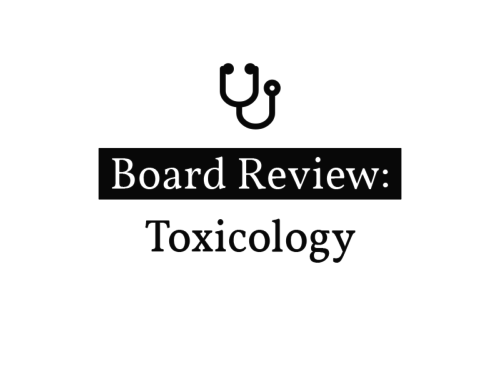Brief H&P
A 24 year-old male with no reported medical history is transferred from jail for altered mental status. The patient had been in jail for two days and was noted to develop worsening confusion and agitation.
On arrival in the emergency department, the patient was agitated, moving wildly requiring physical restraints and speaking incomprehensibly. Initial vital signs were notable for tachycardia (HR 145bpm) and hypertension (BP 140/100mmmHg), afebrile core temperature. Examination revealed dilated pupils and dry skin. Point-of-care glucose measured 70mg/dL. Midazolam 5mg IV was administered due to his severe agitation and inability to cooperate with detailed evaluation.
After administration of midazolam, the patient became somewhat more lucid though he appeared to be hallucinating. He reported a history of alprazolam use. The patient was treated with nutritional supplementation and escalating doses of benzodiazepines. The patient remained persistently agitated after administration of midazolam 40mg IV as a single dose so phenobarbital was administered and the patient was intubated for airway protection and anticipated clinical course. The patient was started on a midazolam infusion at 40mg/hour after which he became more calm and vital signs normalized. Laboratory tests were unremarkable with the exception of elevated CK. Head imaging was negative for acute intracranial processes. The patient was admitted to the intensive care unit where he was transitioned to propofol and dexmedetomidine infusions. He was eventually extubated and discharged on hospital day #3 with a chlordiazepoxide taper.
Algorithm for the Management of Sedative-Hypnotic Withdrawal
References
Treatment Algorithms
- Gold, J. A., Rimal, B., Nolan, A. & Nelson, L. S. A strategy of escalating doses of benzodiazepines and phenobarbital administration reduces the need for mechanical ventilation in delirium tremens Crit Care Med 35, 724–730 (2007).
- Schmidt, K. J. et al. Treatment of Severe Alcohol Withdrawal. Ann Pharmacother 50, 389–401 (2016).
- Santos, C., Olmedo, R. E. & Kim, J. Sedative-hypnotic drug withdrawal syndrome: recognition and treatment. Emerg Medicine Pract 19, S1–S2 (2017).
Gabapentin
- Myrick, H. et al. A Double‐Blind Trial of Gabapentin Versus Lorazepam in the Treatment of Alcohol Withdrawal. Alcohol Clin Exp Res 33, 1582–1588 (2009).
- Stock, C. J., Carpenter, L., Ying, J. & Greene, T. Gabapentin Versus Chlordiazepoxide for Outpatient Alcohol Detoxification Treatment. Ann Pharmacother 47, 961–969 (2013).
Barbiturates
- Hendey, G. W., Dery, R. A., Barnes, R. L., Snowden, B. & Mentler, P. A prospective, randomized, trial of phenobarbital versus benzodiazepines for acute alcohol withdrawal. Am J Emerg Medicine 29, 382–385 (2011).
- Rosenson, J. et al. Phenobarbital for Acute Alcohol Withdrawal: A Prospective Randomized Double-blind Placebo-controlled Study. J Emerg Medicine 44, 592-598.e2 (2013).
Textbook Chapters
- Cohen, J. P. et al. Alcohols. in Tintinalli’s Emergency Medicine: A Comprehensive Study Guide, 9e (McGraw-Hill Education, 2020).
- Quan, D. et al. Benzodiazepines. in Tintinalli’s Emergency Medicine: A Comprehensive Study Guide, 9e (McGraw-Hill Education, 2020).
Reviews
- Mayo-Smith, M. F. Pharmacological Management of Alcohol Withdrawal: A Meta-analysis and Evidence-Based Practice Guideline. Jama 278, 144–151 (1997).
- Mayo-Smith, M. F. et al. Management of Alcohol Withdrawal Delirium: An Evidence-Based Practice Guideline. Arch Intern Med 164, 1405–1412 (2004).
- DeBellis, R., Smith, B. S., Choi, S. & Malloy, M. Management of Delirium Tremens. J Intensive Care Med 20, 164–173 (2005).
- Amato, L., Minozzi, S., Vecchi, S. & Davoli, M. Benzodiazepines for alcohol withdrawal. Cochrane Db Syst Rev CD005063 (2010) doi:10.1002/14651858.cd005063.pub3.








